39+ Sample Equipment Lease Agreements
-

Equipment Lease Agreement
download now -
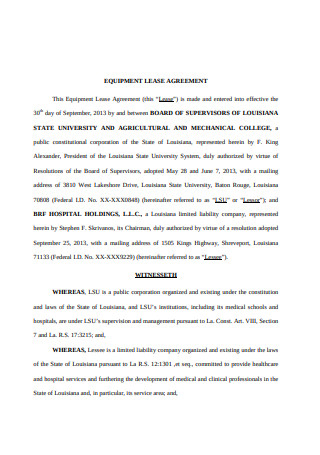
Equipment Lease Agreement Format
download now -
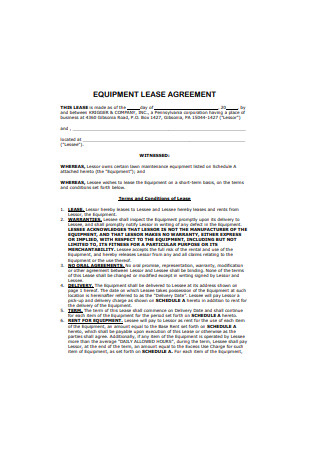
Sample Equipment Lease Agreement
download now -
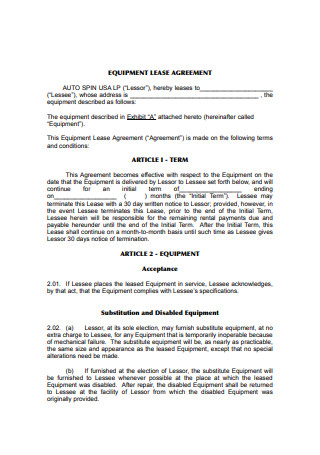
Equipment Lease Agreement Example
download now -
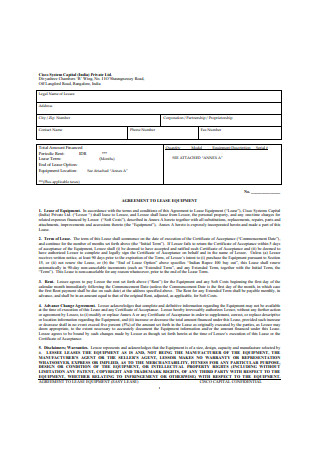
Agreement to Lease Equipment
download now -
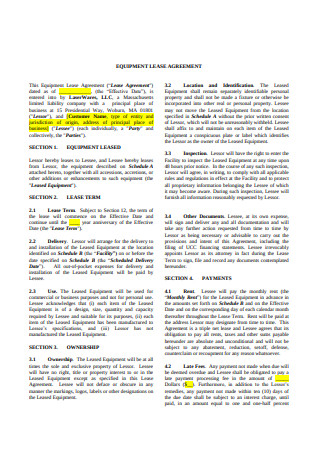
Formal Equipment Lease Agreement
download now -
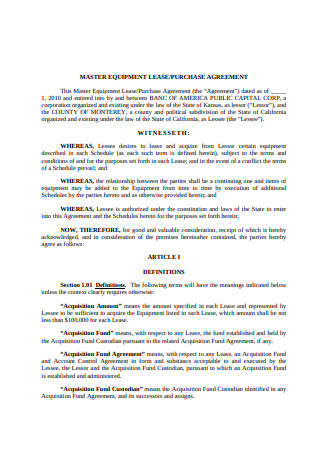
Master Equipment Lease Agreement
download now -
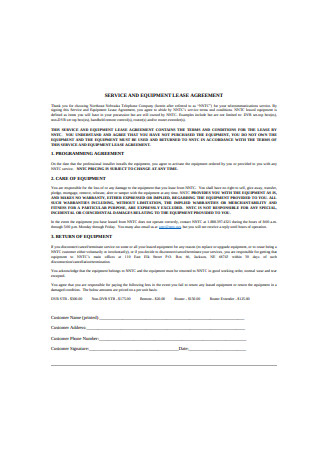
Service and Equipment Lease Agreement
download now -
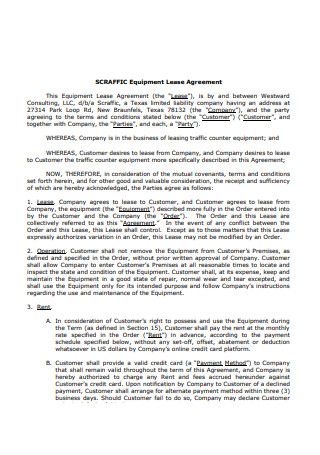
Online Equipment Lease Agreement
download now -
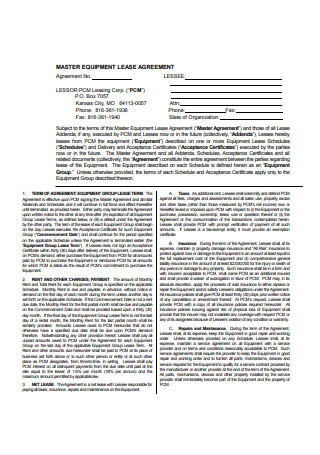
Master Equipment Lease Agreement Format
download now -
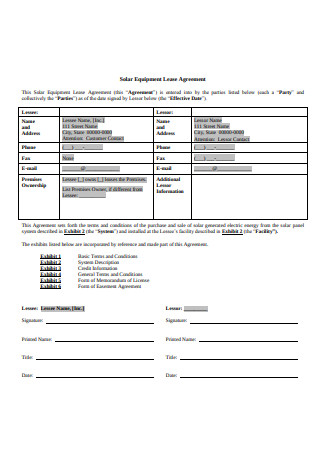
Solar Equipment Lease Agreement
download now -
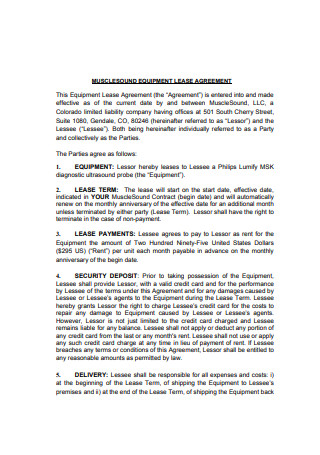
MuscleSound Equipment Lease Agreement
download now -
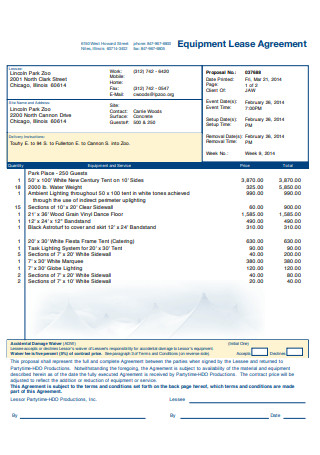
Basic Equipment Lease Agreement
download now -

Basic Equipment Lease Agreement Example
download now -
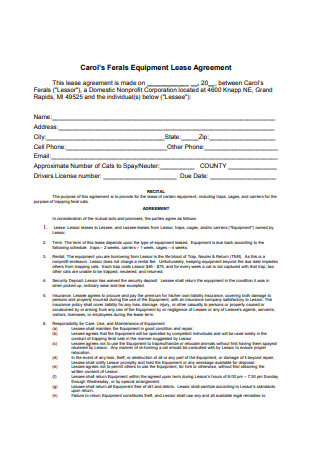
Equipment Lease Agreement Sample
download now -
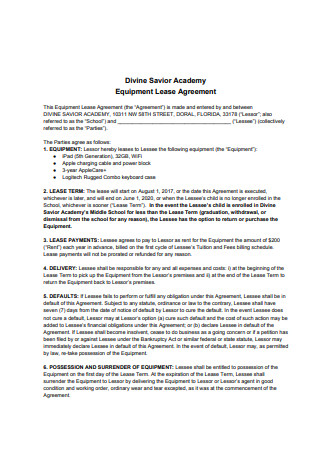
Formal Equipment Lease Agreement Sample
download now -
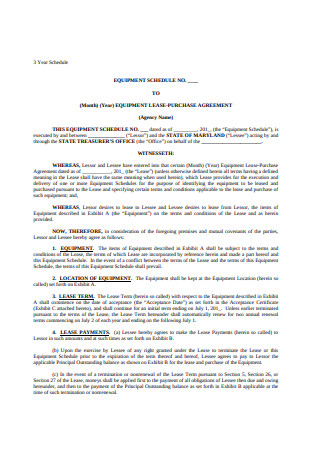
Equipment Lease Purchase Agreement
download now -

Basic Equipment Lease Purchase Agreement
download now -
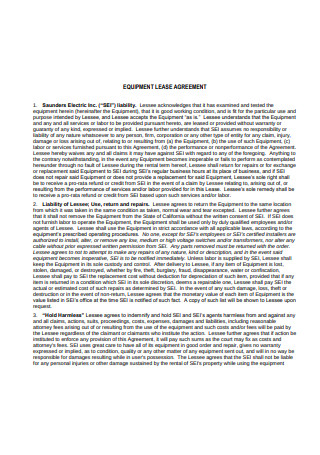
Sample Equipment Lease Agreement Format
download now -
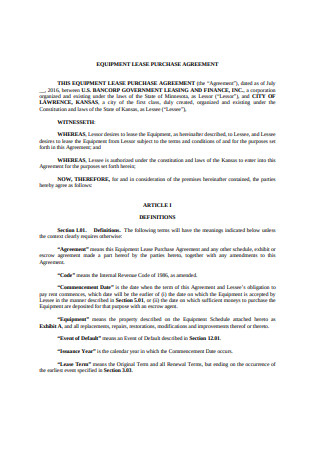
Equipment Lease Purchase Agreement Sample
download now -
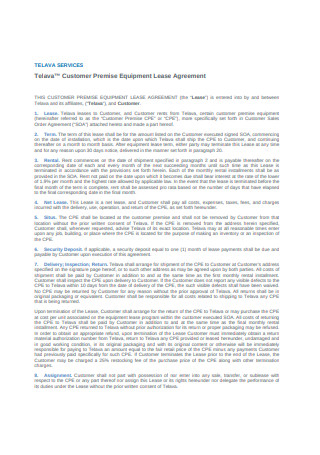
Customer Premise Equipment Lease Agreement
download now -
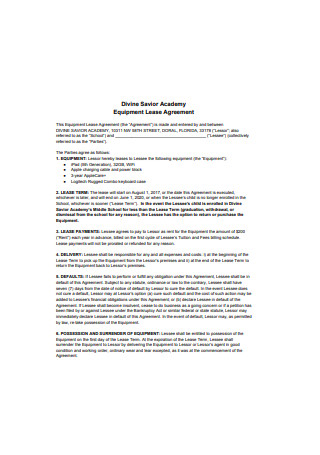
Formal Equipment Lease Agreement Example
download now -
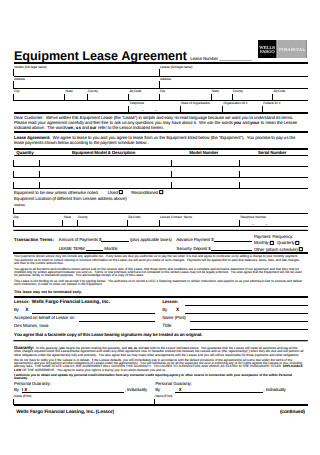
Equipment Lease Agreement Form
download now -
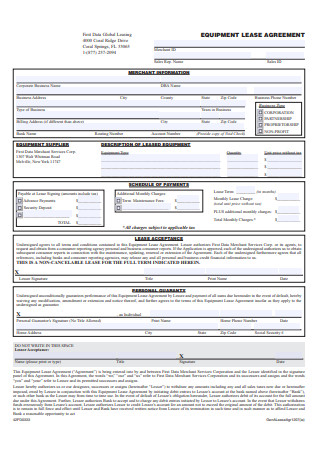
Printable Equipment Lease Agreement
download now -
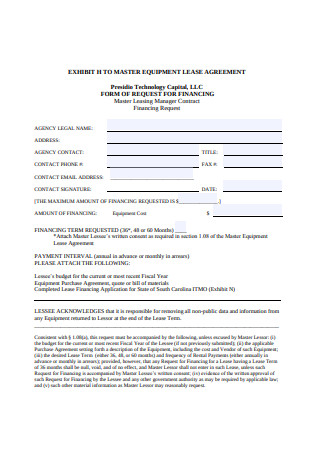
Master Equipment Lease Agreement Example
download now -
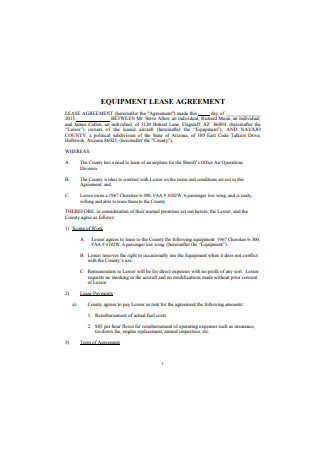
Sample Equipment Lease Agreement Example
download now -
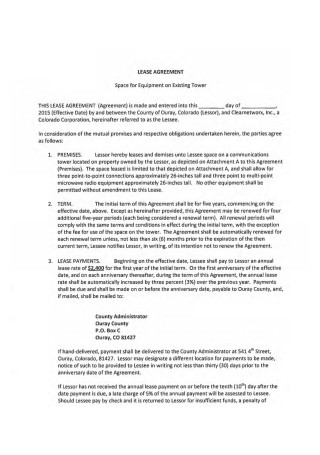
Simple Equipment Lease Agreement
download now -
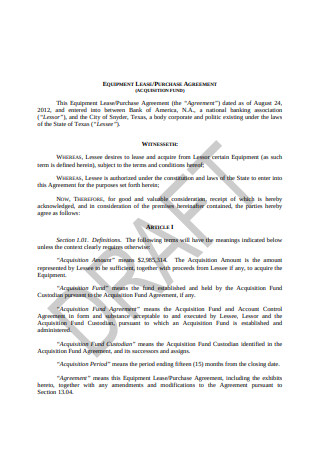
Equipment Lease Purchase Agreement Format
download now -
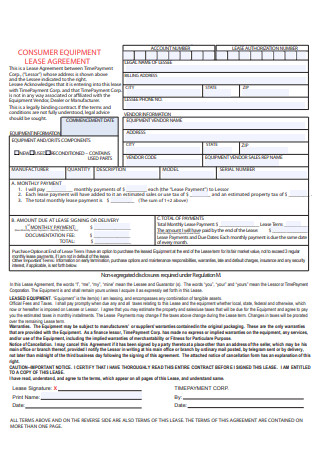
Consumer Equipment Lease Agreement
download now -
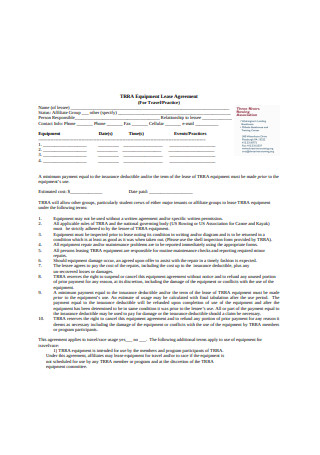
Simple Equipment Lease Agreement Example
download now -

Aircraft and Equipment Lease Agreement
download now -
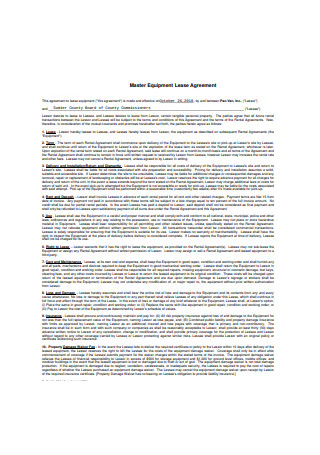
Master Equipment Lease Agreement Sample
download now -
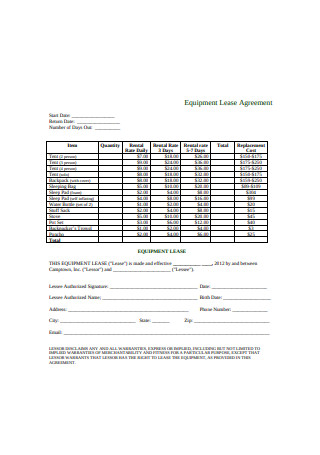
Standard Equipment Lease Agreement
download now -
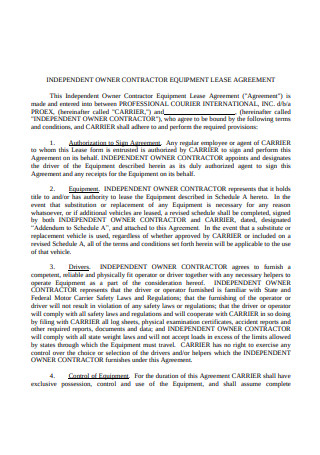
Owner Contractor Equipment Agreement
download now -

Sample Equipment Lease Purchase Agreement
download now -
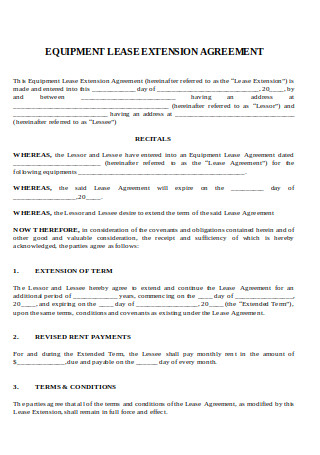
Equipment Lease Extension Agreement
download now -

Standard Equipment Lease Agreement Format
download now -
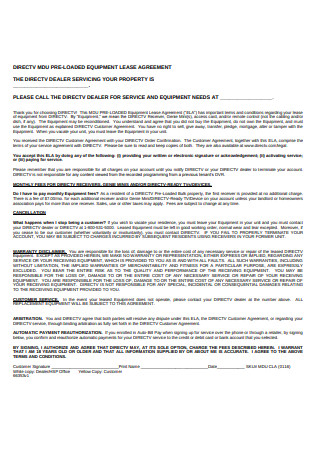
Diretv Equipment Lease Agreement
download now -
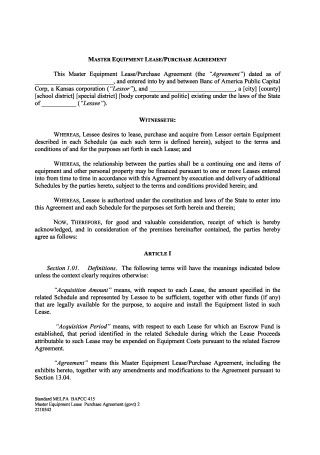
Master Equipment Lease Purchase Agreement
download now -
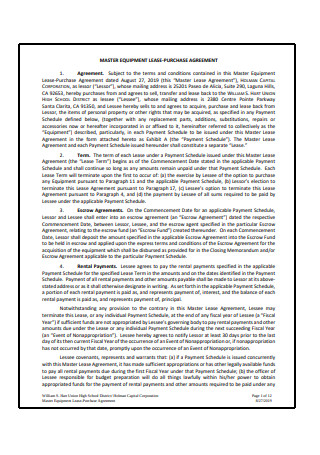
Sample Master Equipment Lease Purchase Agreement
download now
FREE Equipment Lease Agreement s to Download
39+ Sample Equipment Lease Agreements
What Is an Equipment Lease Agreement?
The Key Elements of an Equipment Lease Agreement
Why Should You Equip Your Leasing Business With an Agreement?
What are the Types of Equipment Leases?
How to Draft a Solid and Enforceable Equipment Lease Agreement
What Is an Equipment Lease Agreement?
Cash-strapped businesses prefer leasing equipment for the meantime instead of buying them right away. Leasing helps firms from different industries acquire different equipment and tools needed to carry out optimal operations. Moreover, it enables proprietors to obtain the latest machinery without having to worry about being outdated as inventions rise to development over time. Because of the convenience it brought to business owners, running an equipment rental business will be a good choice. To support this claim, data from Statista revealed that the revenue for commercial or industrial rental and leasing amounted to $82.02 billion as of 2018.
Preparing documents is an imperative process when managing a business. In the industry, the paperwork ranges from simple forms to complex legal documents. Running an equipment leasing enterprise is no exception to these. One of the most important documents you should have before closing the deal with your clients is an equipment lease agreement. It is a legally binding document that outlines the rights and responsibilities of both the lessor and the lessee for a specified period. With an equipment lease agreement at hand, there will be a written proof that the property owner granted the lessee the right to use vehicles, machinery, and other equipment in return of a regular payment.
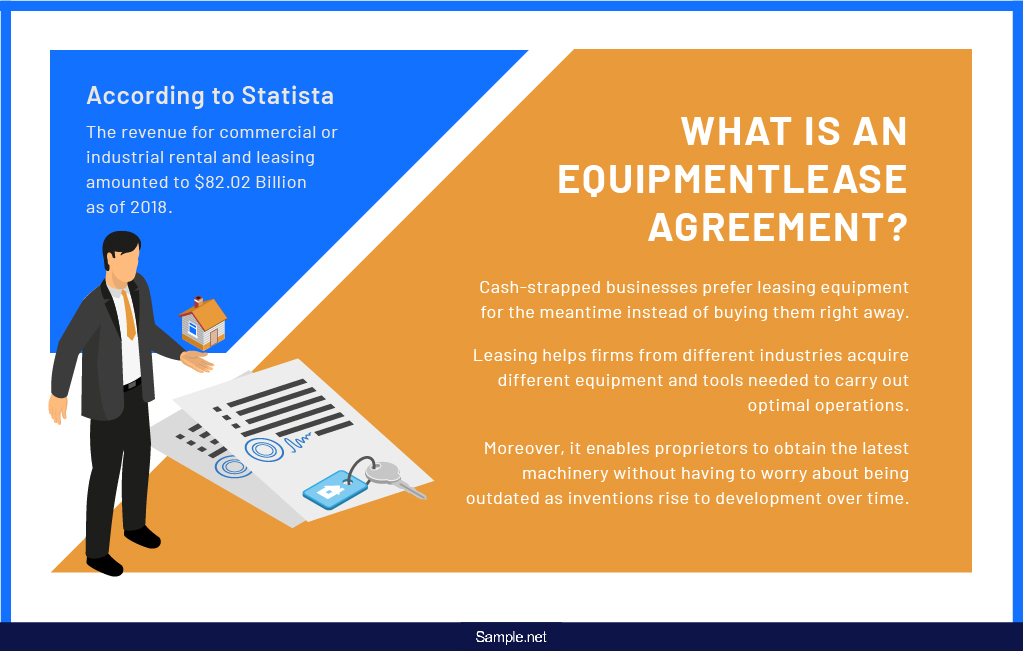
The Key Elements of an Equipment Lease Agreement
Before establishing a business, you should note that it does not only take manpower to keep it running. In the absence of the needed materials, facilities, and equipment, the business is most likely to flop drastically. Likewise, an equipment lease agreement does not only have one component. It consists of several sections or clauses for it to serve its purpose to both the lessor and the lessee. Don’t have a clear idea about the parts of an equipment lease agreement? Read the information provided below.
Why Should You Equip Your Leasing Business With an Agreement?
The need for companies to acquire up-to-date equipment influences the upsurge demand for equipment leasing. In fact, around 80% of companies in the United States prefer to lease some machinery and tools instead of purchasing one. This is according to the Equipment Leasing Association of America. If you are part of the growing industry, you should note the importance of having a lease agreement in streamlining business processes.
An equipment lease agreement is beneficial not only to the property owner but also to the business who will rent the equipment since it protects both parties in the event that the other fails to meet the expectations set. A written lease agreement sets out legal ramifications either party will face when they breach the agreed-upon terms and conditions. Say, for example, the lessee forgets to pay the fees during the due date—this would mean that the lessor can charge for late payment as long as it is stated in the agreement. Moreover, it helps settle controversies and misunderstandings between two parties more effectively given that there is a proof that an agreement occurs between them.
What are the Types of Equipment Leases?
When businesses don’t have an abundance of financial resources to acquire updated equipment, they run to leasing companies to obtain the machinery and tools they need to carry out business operations as usual. In transacting with these leasing companies, bear in mind that equipment leases fall into two major categories, namely capital lease and operating lease. Learn more about it in this section.
Capital Lease
The capital lease (also referred to as nominal or $1 buyout lease) is the type of equipment leasing which gives the lessee or the user of the asset the power to purchase the equipment at the end of the lease. Because it usually involves high-value equipment such as aircraft, machinery, ships, and the like, a capital lease is often long-term and non-cancellable. Companies that want to use an asset for an extended period and purchase it as the contract concludes prefer this than short-term ones. Moreover, the lessee holds the obligation of the equipment’s maintenance. Aside from that, they should also pay taxes and insurance for the equipment.
Operating Lease
The operating lease is in contrast with the capital lease since it is usually short-term and open for cancellations even before the expiration of the term. However, the lessee should provide proper notice before terminating the agreement and pay additional charges or penalties. Unlike the capital lease, the ownership of the asset remains with the lessor. It means that the property owner will face obsolescence risks. This type of lease is preferable for businesses that want to make use of an asset for a short period only. Other terms for operating lease includes true lease or fair market value lease.
The capital lease and the operating lease are only two of the various types of equipment leases. Some equipment leasing companies combine the features of these leases to come up with something that will benefit both parties. Furthermore, there is also a type of lease wherein adjustment of month-to-month rentals is permitted depending on the value residual value the lessee pays. It is commonly used in leasing motor vehicles, trucks, and trailers. We refer to this as the TRAC (terminal rental adjustment clause) lease. Other kinds of leases include PUT or purchase upon termination and leaseback.
How to Draft a Solid and Enforceable Equipment Lease Agreement
Documents that create a huge impact on a business’ processes may take a lot of time and effort to write. You need to have vast background knowledge of the subject matter for the document not to work against your favor. For this reason, some businesses make use of generic and ready-made templates to accomplish the task more efficiently. While these templates help professionals in their document-writing process, nothing beats a business document that is tailor-made in accordance with its purpose. If you are yet to create an equipment lease agreement but you don’t have a definite idea on how to start, follow this step-by-step guide outlined below.
Step 1: Launch a Word Processor
Aside from making sure that your equipment lease agreement includes crucial stipulations, you should also look into the overall appearance of the document. A well-organized and properly presented legal document can help increase the credibility of your business. In addition, it enables the lessees to go over the document with ease. Keeping these things in mind, the first thing you have to do in creating the lease agreement is to launch a word processor and format your document. It would be best if you make use of a font style that is simple and legible in both digital and print media.
As you start writing the agreement, see to it that it will be easier for the readers of the document to identify the different types of provisions that come with leasing the property. You can accomplish this by providing headings for every clause you include in your agreement. The headings should have a larger font size for it to be easily distinguished from each other and the rest of the text.
Step 2: Use Plain and Simple Language
Some people find agreements daunting because of the legal terms and jargon it includes. However, you should note that agreements don’t have to be like that. Using a plain and simple language in writing the agreement will be beneficial to both parties in a way that the lessee can immediately understand the provisions; thus, the property owner doesn’t have to do much explaining. In the event that you mentioned technical terms in your agreement, remember to provide definitions of these.
Step 3: Start Writing the Clauses
As mentioned beforehand, an equipment lease agreement includes various terms you should cover for the document to serve its purpose. After typing in the title, parties, date, and the recitals, remember the sections you should include in your document and start writing them down. The rules you establish should help you protect the optimal functionality of your equipment. Therefore, there will be a need for you to set forth a limitation of the use of your equipment. You must also specify in your document the lessee’s responsibility for repairs and maintenance.
Step 4: Consult a Business Lawyer
Before signing the document, you should first consult a business lawyer to prevent litigations or lawsuits. Since they have vast background knowledge of the law, these experts will help you be completely aware as to whether or not the terms and conditions in your equipment lease agreement are legally enforceable.
Step 5: Discuss With the Lessee
Now that you are certain that your agreement is free from errors — whether technical or grammatical — you can already discuss the terms with the lessee. Through this, both parties can negotiate until they come up with a mutually beneficial agreement. Make sure to put into writing any changes made in the terms and conditions of the arrangement. After having accomplished steps one to five, both parties should affix their signatures for the document to take full effect.
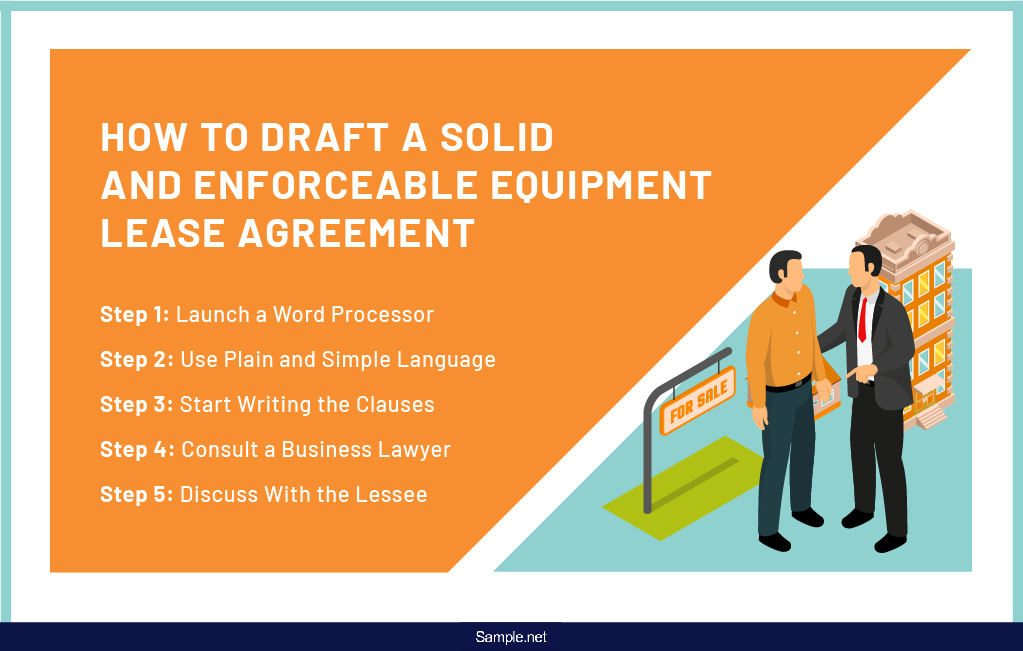
Regardless of the type of leasing business you manage, you should take note of the importance of paper trails. Write every agreement made, record every transaction, and keep track of the cash flow as frequent as possible. Although it sounds tiring to do so, just keep in mind the advantages it will bring to the company in the long run. Besides, technology provides individuals and businesses an avenue to carry out these tasks more efficiently. After knowing the fundamentals of equipment rentals and the equipment lease agreement, are you ready to kick-start your agreement-writing process? Don’t waste any of your time and start writing one today!
